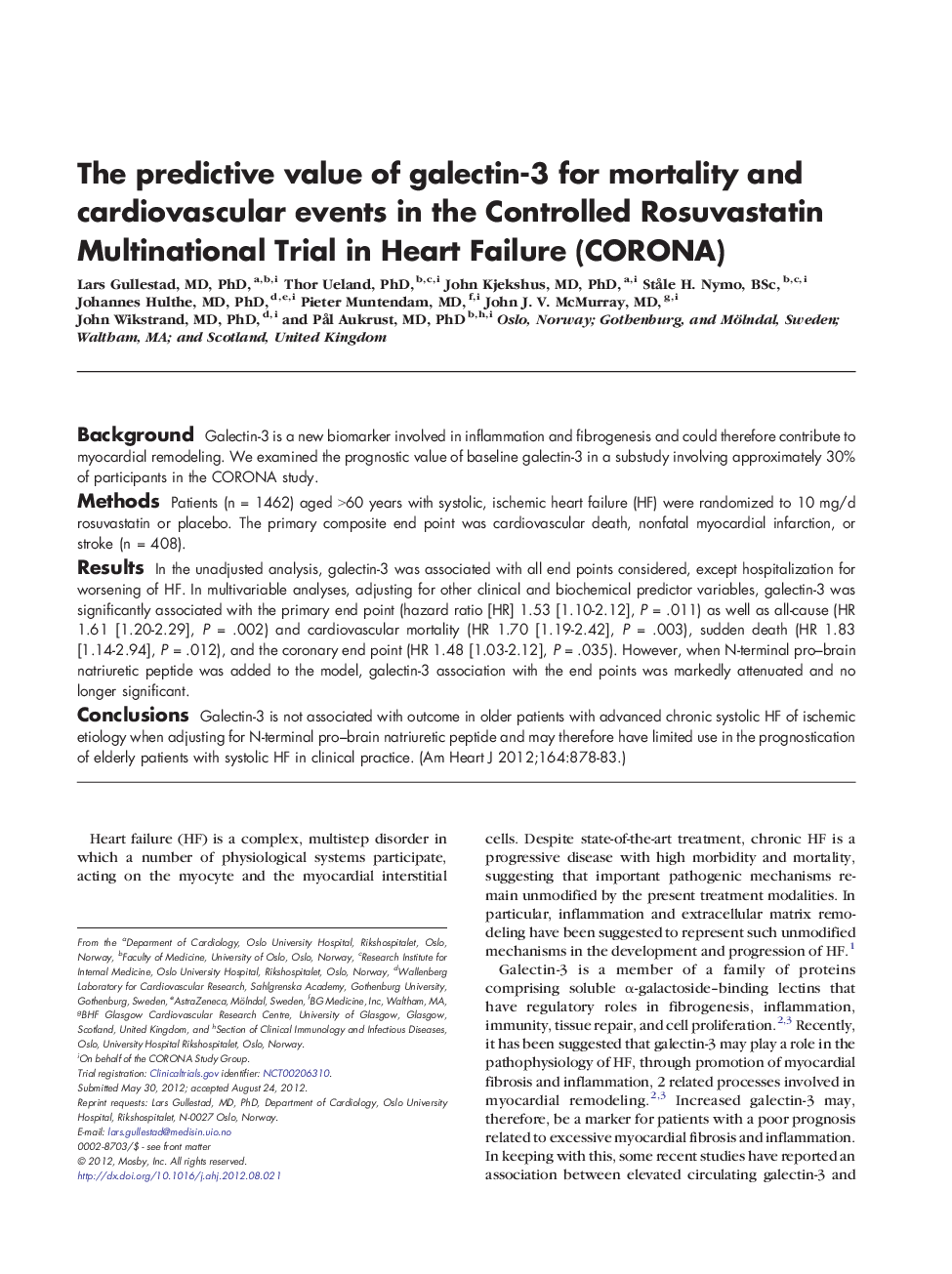| Article ID | Journal | Published Year | Pages | File Type |
|---|---|---|---|---|
| 2848852 | American Heart Journal | 2012 | 6 Pages |
BackgroundGalectin-3 is a new biomarker involved in inflammation and fibrogenesis and could therefore contribute to myocardial remodeling. We examined the prognostic value of baseline galectin-3 in a substudy involving approximately 30% of participants in the CORONA study.MethodsPatients (n = 1462) aged >60 years with systolic, ischemic heart failure (HF) were randomized to 10 mg/d rosuvastatin or placebo. The primary composite end point was cardiovascular death, nonfatal myocardial infarction, or stroke (n = 408).ResultsIn the unadjusted analysis, galectin-3 was associated with all end points considered, except hospitalization for worsening of HF. In multivariable analyses, adjusting for other clinical and biochemical predictor variables, galectin-3 was significantly associated with the primary end point (hazard ratio [HR] 1.53 [1.10-2.12], P = .011) as well as all-cause (HR 1.61 [1.20-2.29], P = .002) and cardiovascular mortality (HR 1.70 [1.19-2.42], P = .003), sudden death (HR 1.83 [1.14-2.94], P = .012), and the coronary end point (HR 1.48 [1.03-2.12], P = .035). However, when N-terminal pro–brain natriuretic peptide was added to the model, galectin-3 association with the end points was markedly attenuated and no longer significant.ConclusionsGalectin-3 is not associated with outcome in older patients with advanced chronic systolic HF of ischemic etiology when adjusting for N-terminal pro–brain natriuretic peptide and may therefore have limited use in the prognostication of elderly patients with systolic HF in clinical practice.
